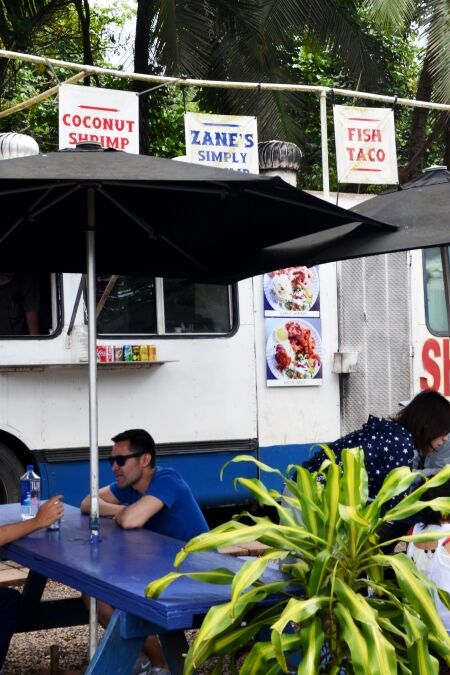Puu Oo, a volcanic cone on the east rift zone of Kilauea Volcano in Hawaii, is known for being the site of Kilauea’s longest and most active eruption, which lasted from 1983 to 2018. This area has become a fascinating destination for visitors intrigued by the raw power of volcanic activity and the striking landscapes it creates. In this guide, you’ll discover the history, terrain, and tips for safely exploring the remarkable volcanic features around Puu Oo.
Highlights
- Adventurous travelers can explore various hiking trails around Puu Oo, allowing you to traverse lava rock terrain and take in the dramatic landscape formed by years of volcanic activity.
- While Puu Oo itself is not currently erupting, visitors can still enjoy views of the now-solidified lava flows that were once rivers of molten rock.
- For geology enthusiasts, Puu Oo offers an up-close look at volcanic formations, lava tubes, and other natural phenomena.
- Puu Oo’s volcanic crater is a dramatic sight. Though the immediate area surrounding the crater may be inaccessible, viewing the massive crater from a safe distance offers an awe-inspiring look at the sheer power of nature.
History

The Birth of Puʻu ʻŌʻō: A Volcanic Cone Emerges
Puʻu ʻŌʻō, located in the eastern rift zone of Kīlauea volcano in Hawaiʻi, gained international recognition for one of the longest-lasting eruptions in modern history. The eruption began on January 3, 1983, and continued until April 30, 2018, reshaping the landscape of Hawaiʻi and offering invaluable insights into volcanic activity.
Initial Fissure Eruption (1983)
The eruption’s first stage began with a dramatic series of fissures in the remote rainforests of Kīlauea’s eastern rift zone. Lava fountains and curtains of fire erupted from these fissures, creating a spectacular display of nature’s power. These fissures opened across a wide area, releasing large quantities of lava and signaling the start of a historic eruption.
Formation of the Puʻu ʻŌʻō Cone
As the eruption progressed, volcanic activity concentrated at a single vent, which ultimately gave rise to the Puʻu ʻŌʻō cone. Over multiple eruptive episodes, the cone steadily grew, reaching a height of 255 meters (837 feet). The formation of this volcanic cone became a defining feature of the landscape, attracting scientists and tourists alike to witness the ongoing volcanic activity.
Destruction and Creation: Lava Flows and Land Expansion
The eruption not only transformed the landscape but also altered lives. In 1990, the village of Kalapana was tragically destroyed by advancing lava flows, illustrating the destructive potential of volcanic activity. However, the eruption also brought creation—new land was added to Hawaiʻi’s coastline as lava flowed into the ocean, hardening to expand the island’s landmass.
Kīlauea's 2018 Eruption: The Collapse of Puʻu ʻŌʻō
The eruption that had continued for decades took a dramatic turn in 2018 when Kīlauea’s lower east rift zone experienced a new series of eruptions. This eventually caused the summit of Puʻu ʻŌʻō to collapse, ending its long-lived eruption. Lava flows were diverted to a new vent, signaling the start of a new phase in Kīlauea’s volcanic activity.
Longest-Lived Eruption in Modern History
The eruption of Puʻu ʻŌʻō stands as one of the longest-lasting volcanic events in recent history, providing an unparalleled opportunity for scientists to study volcanic processes over an extended period. The longevity of the eruption allowed researchers to observe the evolution of volcanic activity, offering unique insights into how volcanic cones form and how lava flows behave over time.
Scientific Discoveries and Insights
Puʻu ʻŌʻō’s eruption advanced the scientific understanding of volcanic systems. Researchers were able to closely study the dynamics of lava flows, the development of volcanic cones, and the long-term evolution of volcanic eruptions. The insights gained from this eruption have contributed significantly to volcanic research and hazard management worldwide.
Economic and Cultural Impact
While the eruption caused devastation to property, including the destruction of Kalapana and damage to surrounding areas, it also brought economic benefits. Tourism surged as visitors from around the world came to witness the eruption, contributing to the local economy. Additionally, the scientific research conducted during the eruption led to further economic investment in the region.
Exploring the Area

Hiking Opportunities
While access to the Puu Oo cone itself is often restricted due to safety concerns, the surrounding area offers incredible hiking opportunities for adventurous visitors. Trails in Hawaii Volcanoes National Park allow you to explore the rugged terrain shaped by decades of volcanic activity. You’ll encounter vast lava fields, craters, and steam vents that offer a dramatic glimpse into the island’s geothermal forces.
Varied Terrain
The terrain around Puu Oo varies from smooth, hardened lava flows to jagged rock formations, providing a surreal landscape for exploration. Hikers should be prepared for uneven ground and potential changes in weather conditions. Be sure to follow marked trails and stay aware of current volcanic activity alerts.
Photography Spots and Best Time to Visit

For photography enthusiasts, the area’s stark, otherworldly beauty provides fantastic opportunities for capturing stunning images. The best time to visit for optimal lighting and views is early morning or late afternoon when the low angle of the sun highlights the textures of the volcanic landscape. Keep an eye out for steam rising from vents, adding a mystical element to your shots.
Tips for Visiting
- Check Current Conditions: Always review the latest safety advisories and volcanic activity updates from local authorities before your visit.
- Stay on Marked Trails: Follow designated paths to avoid dangerous areas like unstable ground and hazardous gases.
- Bring Proper Gear: Wear sturdy shoes for hiking on rough lava terrain, and bring plenty of water and sun protection.
- Plan for Weather Changes: Be prepared for sudden changes in weather, including rain and cooler temperatures at higher elevations.
- Respect Restricted Areas: Observe all access restrictions around Puu Oo and its surrounding areas for your safety.
- Visit Early or Late for Photography: The best lighting for photography is during the early morning or late afternoon when shadows enhance the landscape’s dramatic textures.
- Follow Park Guidelines: Adhere to all rules set by Hawaii Volcanoes National Park, and be mindful of the natural environment to preserve its beauty.
Best Times to Visit
The best times to visit Puu Oo are early in the morning or late in the afternoon when the sun’s low angle casts dramatic shadows across the volcanic landscape, highlighting its unique textures. These times also offer cooler temperatures, making hiking more comfortable. Visitors can avoid the midday heat and enjoy fewer crowds, ensuring a more serene experience while exploring the area’s stunning features. Always check for volcanic activity updates before planning your trip.
Nearby Attractions

Nearby Puu Oo, visitors can explore other volcanic wonders like Hawaii Volcanoes National Park, home to the famous Kilauea and Mauna Loa volcanoes. The scenic Chain of Craters Road offers breathtaking views of the rugged coastline and lava flows, while Mauna Ulu provides an accessible hiking experience through a stunning lava landscape. For accommodations and dining, nearby towns like Volcano Village offer cozy lodges, local eateries, and shops, making it a convenient base for further exploration of the area.
Frequently Asked Questions (FAQs)
Puu Oo is not accessible to the public due to safety concerns and ongoing volcanic activity in the area.
Puu Oo’s last significant eruption occurred in 2018, marking the end of its 35-year-long eruption.
Puu Oo is a cinder cone volcano, formed from the explosive eruptions of lava and ash from Kilauea’s East Rift Zone.
While Puu Oo’s continuous eruption ceased in 2018, Kilauea remains an active volcano.
Puu Oo’s decades-long eruption reshaped large portions of Hawaii’s Big Island, creating new lava flows and altering the terrain.
Puu Oo is famous for its extended volcanic activity and the creation of dramatic lava flows that impacted Hawaii’s Big Island.
How to Get There
By Car
To reach Puu Oo by car, start by taking Hawaii Route 11, which is also known as the Mamalahoa Highway. If you’re coming from the direction of Kailua-Kona, head south towards Hawaii Volcanoes National Park. Continue following Route 11 as you pass by familiar landmarks and towns. Keep an eye out for signage indicating the turnoff towards Puu Oo. The drive is scenic, offering breathtaking views of lush landscapes and sprawling vistas. Ensure your vehicle is in good condition, as the road towards Puu Oo can be winding and requires cautious navigation.
By Bus
For those opting to travel via public transportation, catch the Hele-On Bus service that operates routes across the island. Depending on your starting location, you will need to plan your journey to connect to a bus heading toward Hawaii Volcanoes National Park. Make sure to check the current schedules and plan accordingly, as bus services may have limited runs toward more remote locations. Upon arrival at a designated drop-off point, there may be a short walk or additional local transport arrangements needed to reach Puu Oo directly. Taking the bus not only offers a cost-effective way to travel but also provides the opportunity to sit back and enjoy the island’s natural beauty from a local perspective.
Lava Landscapes Await
Puu Oo’s awe-inspiring volcanic landscape is a testament to Hawaii’s ever-changing and dynamic geology, inviting explorers to witness the raw power of nature up close. Puu Oo offers a unique glimpse into the forces that shape the islands. Don’t miss the chance to experience this natural wonder and immerse yourself in the fiery heart of Hawaii’s volcanic history.




